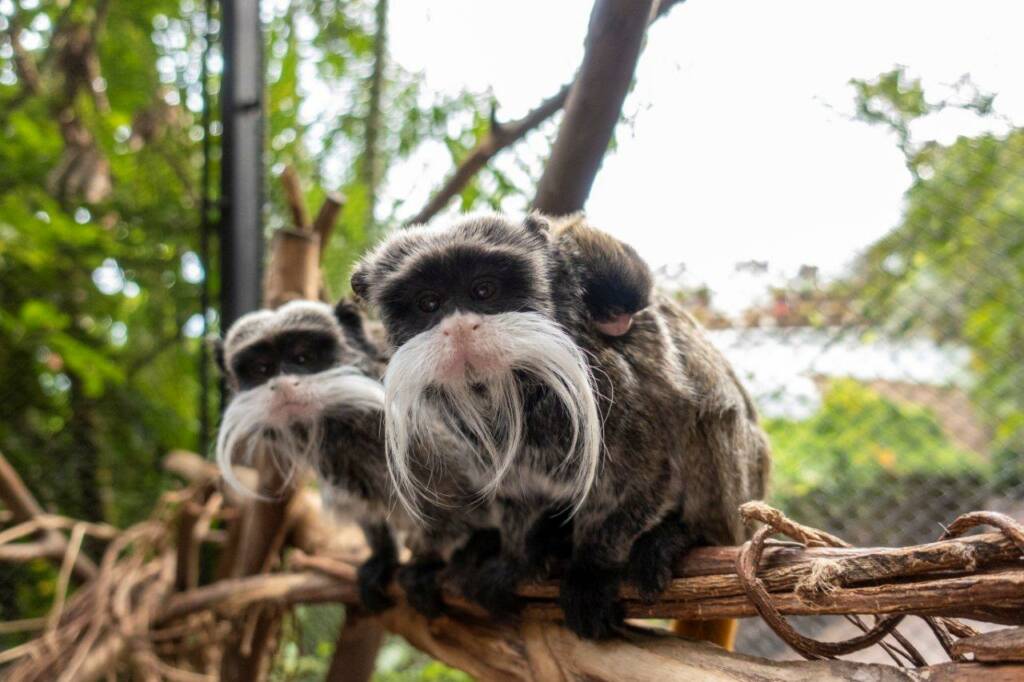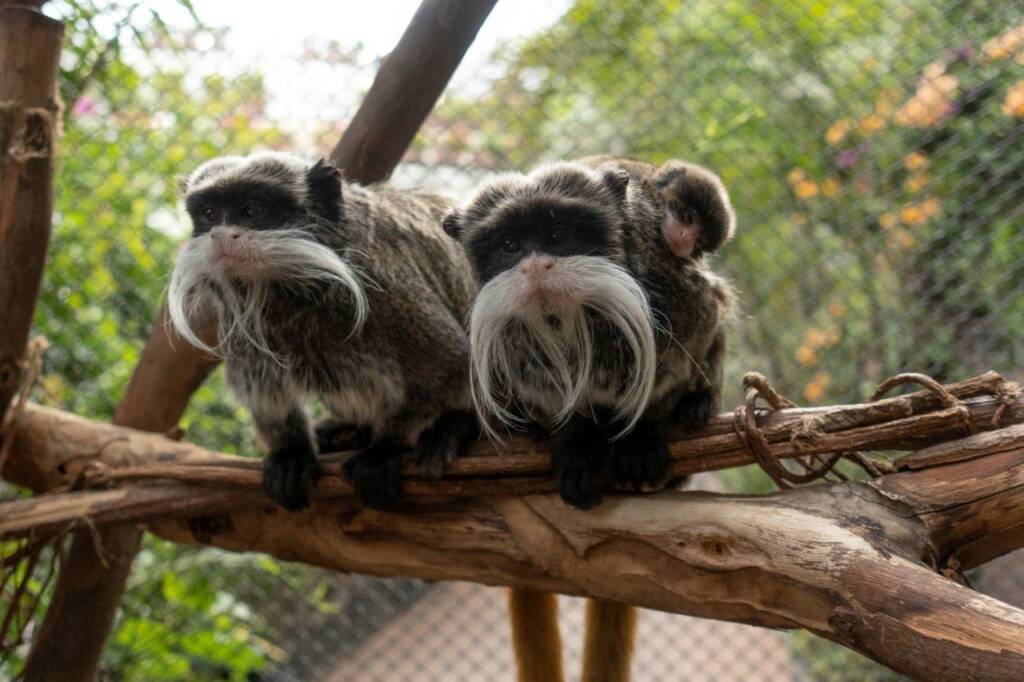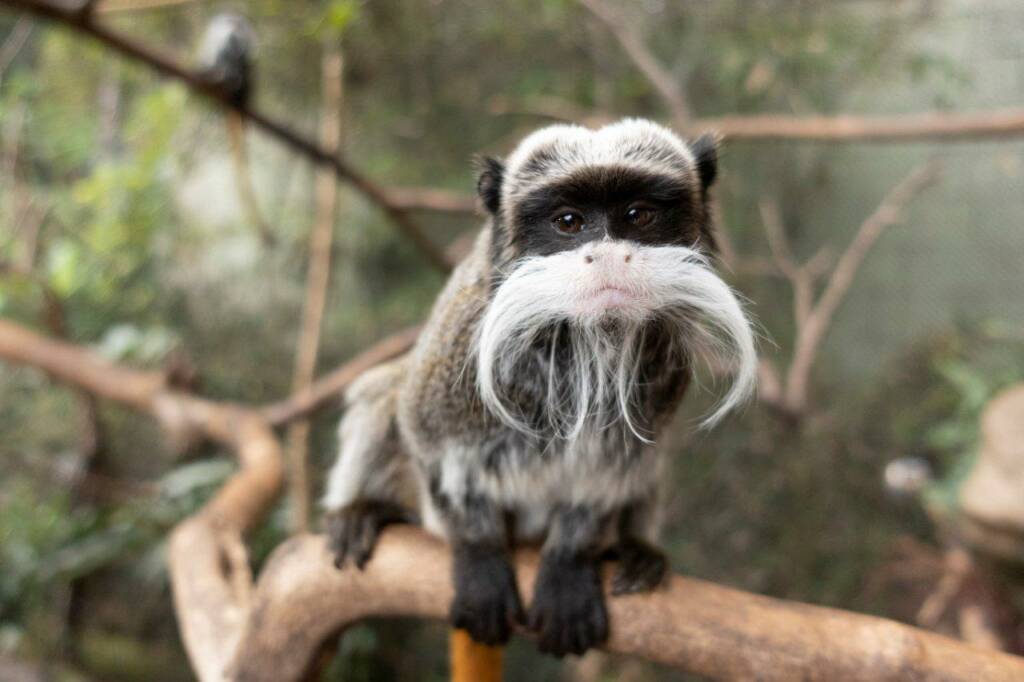
The health crisis caused by the coronavirus has never stopped life in Loro Parque. With the arrival of summer, as it has happened in previous years, the Puerto de la Cruz zoo has witnessed the birth of two emperor tamarin twins.
The parents had offspring for the first time in 2018 and the fact that they are still breeding is an indicator of the well-being of the animals in the Park and how well established this family of Saguinus imperator is.
In this species, it is the male (or another member of the group) who helps carrying the babies until they become independent of the parents, and who gives them to the mother from time to time to suckle. Three pairs of twins have already been born in Loro Parque, the last ones recently, and now they can all be observed living a family life in their facility, with even siblings carrying the newborns.
In this sense, it is important to maintain stable family groups so that the older siblings, during the process of collaboration, learn everything necessary to be successful parents in the future.

The emperor tamarin is native to the forests of Bolivia, Brazil, Colombia and Peru, where it feeds mainly on insects, fruits, flowers, nectar and small animals such as frogs, snails, lizards or spiders. It has characteristic whiskers, claws instead of nails on all fingers except the thumb and two molars instead of three on each side of the jaw, both aspects that differentiate it from other species of monkeys.
Fortunately, it is listed as a species of minor concern in the International Union for Conservation of Nature (IUCN) Red List of Threatened Species, so it is not at risk of extinction. However, the size of their populations is declining and their habitat is shrinking due to residential and commercial development and deforestation, among other threats.
This family is part of an ex situ conservation programme of the European Association of Zoos and Aquariums (EAZA), integrated in the IUCN “One Plan Approach to Conservation” vision. In Loro Parque, they act as representatives of their conspecifics in nature, helping to raise awareness among visitors about the importance of protecting wild animals and their natural habitats. Furthermore, they promote knowledge about the species, its reproduction and breeding, information that is also very valuable for the protection of populations in the wild.











